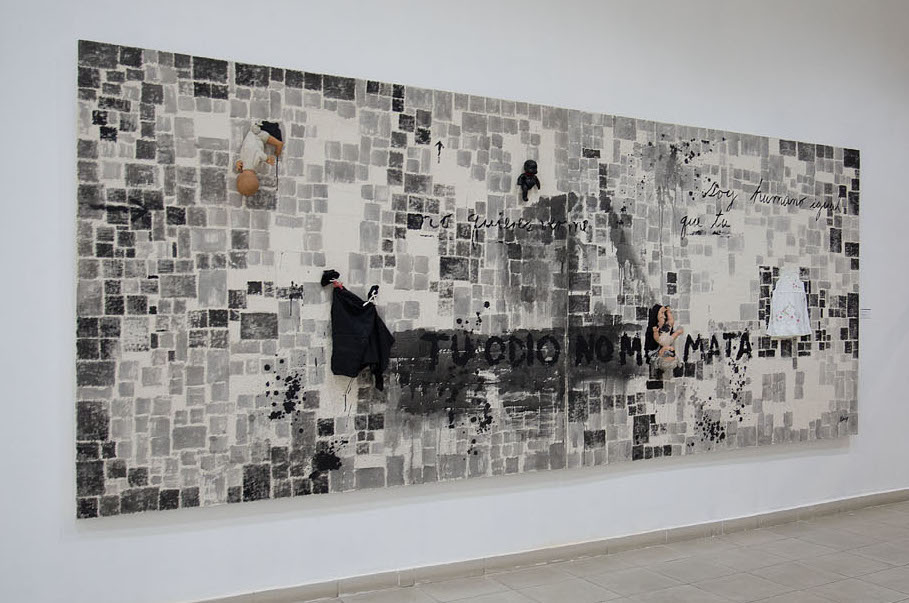In Havana, a Look at Race & Racism in Cuban Art
Juan Roberto Diago, “Día de Reyes,” 2019
Courtesy Museo Nacional de Bellas Artes, Havana
By Cuban Art News
Unlike most historical surveys, the exhibition Nada Personal (Nothing Personal), begins in the present moment.
“Contemporary art,” says curator Roberto Cobas Amate, “is where the frictions between the races, the theme of racism, is most evident.” And racism, he adds, continues to be an unresolved problem.
With the title Nada Personal, says Cobas Amate, the curators wanted to point out that racism is generally not about a specific person. “It’s against the race, against the color of the skin,” Cobas Amate says.
In the Edificio Cubano of the Museo Nacional de Bellas Artes, the exhibition begins just outside the gallery, with Día de Reyes (2019), a large-scale painting by Juan Roberto Diago. “A current work,” says Cobas Amate, “in which he expresses his militant opposition to racism.”
Cobas Amate points out a phrase at the center of the canvas: Tu odio no me mata (Your hate does not kill me). At the upper right is another: Soy humano igual que tu (I am human, the same as you).




